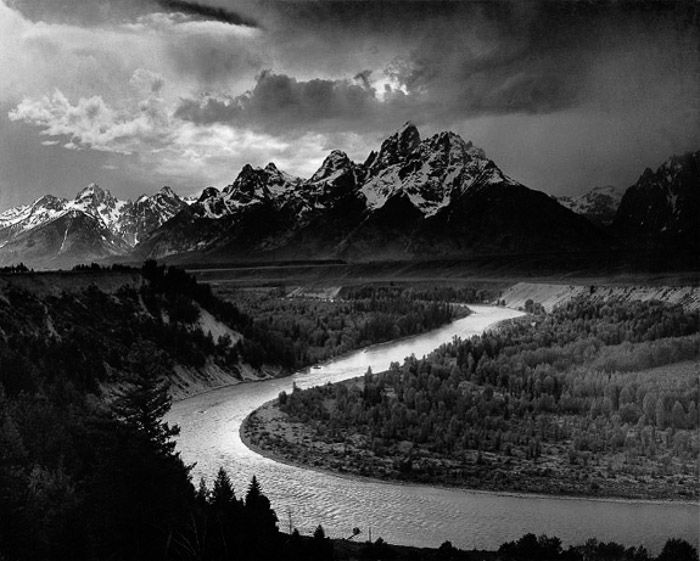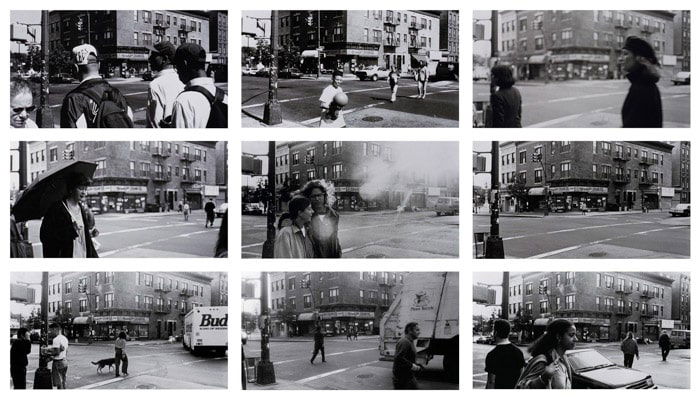25 Famous Female Photographers You Need to Know in 2026
We’ve put together a list of 25 female photographers whose art will inspire and amaze you.
Photography isn’t only a men’s field, but female photographers still have a hard time making their way in the industry. We are here to highlight how many excellent women have left their mark in the photography world.
In no particular order, here’s our list of 25 female photographers. Their creativity and vision will make you take a moment and look twice at their pictures.
1. Nan Goldin
Nan Goldin (September 12, 1953) is a photographer from the US. She started her photography career by focusing on the post-punk new-wave music scene in Boston. Between 1979 and 1986, she created her most important body of work, The Ballad of Sexual Dependency.
These images portrayed drug use, violence, aggressive couples, and autobiographical moments. She sees it as a diary that she would let people read.
Her images are often shown as a slideshow rather than a typical exhibition of prints. The main themes of her work are love, gender, domesticity, and sexuality. She often photographed using available light.
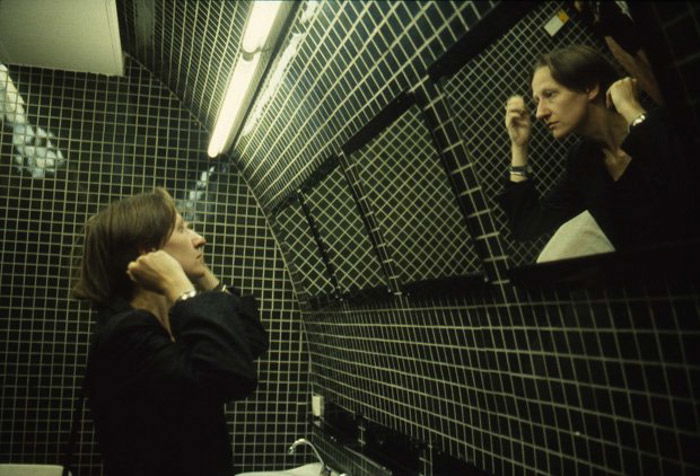
Nan Goldin
2. Corrine Day
Corrine Day (February 19, 1962 – August 27, 2010) was a fashion and documentary photographer from the UK. She entered the fashion industry as a model, then became a fashion photographer.
She was the first to take images of Kate Moss in her teens. She took pictures for British Magazines such as The Face, I-D, and American Vogue.
When she decided to leave the fashion world, Day turned to documentary photography. She focused on her friends, who were habitual cocaine users.
She documented her own struggles after being diagnosed with a brain tumor, which she died from.
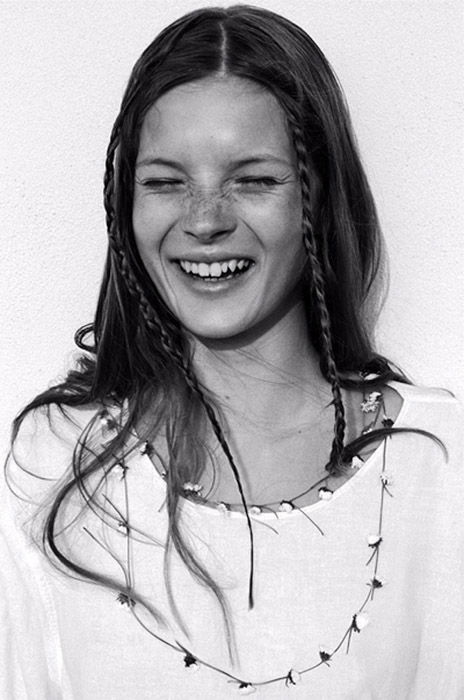
Corrine Day
3. Sophie Calle
Calle (born October 9, 1953) is a French photographer and artist who started her photographic journey in Venice. She followed a man around the city over a few days. Everywhere he went, she followed and photographed him like a private detective.
Her most notable work is The Hotel series, where she worked as a chambermaid. This is where she photographed inside the rooms, focusing on the guests’ personal items.
Her work looks at human vulnerability and examines identity and intimacy.
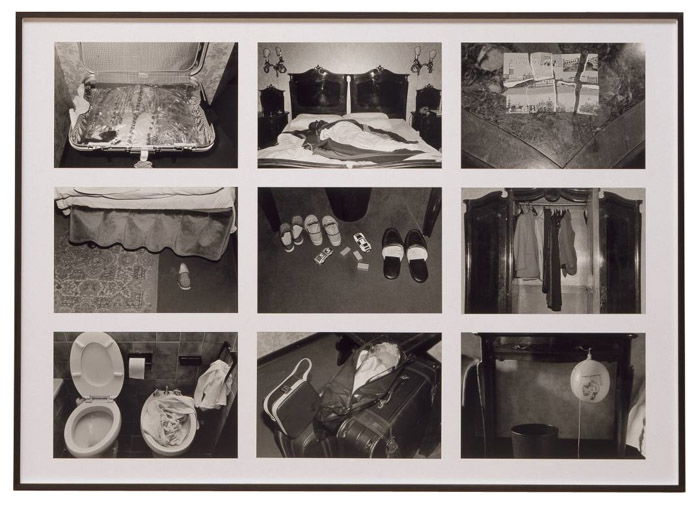
Sophie Calle
4. Gillian Wearing
Gillian Wearing (born December 10, 1963) is a conceptual artist from Birmingham, UK. Her work includes photography, video, and text. Wearing’s most notable work is Signs that say what you want them to say and not Signs that say what someone else wants you to say.
Signs is a street photography project focusing on portraits of strangers she met in London. She approached each subject with paper and pen and asked them to write their thoughts down.
Each of the subjects wrote something that changed her perception of them. Her work looks at individuality and how people see themselves.
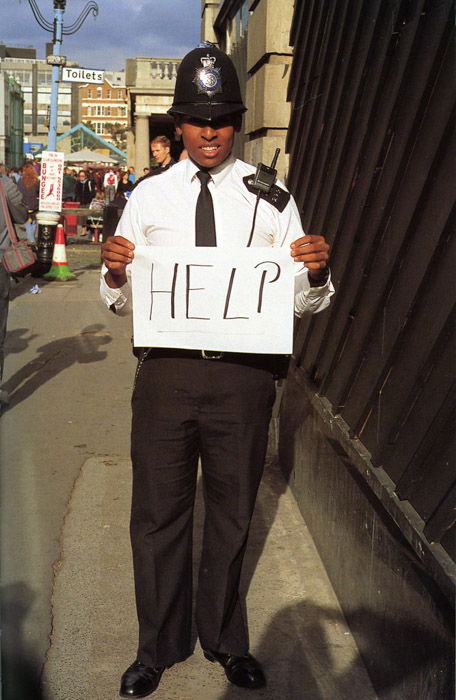
Gillian Wearing
5. Diane Arbus
Diane Arbus (March 14, 1923 – July 26, 1971) was an American photographer focusing on marginalized people. The focus was on transgender people and circus performers, such as dwarves and giants.
She began her career in the commercial world by photographing items in a department store to creating studio images of models.
She soon got fed up with this role and moved on to street photography. She worked on assignments for Vogue, among others. Her work is inspired by Richard Avedon and Weegee.
In 1972, she became the first photographer included in the Venice Biennale.
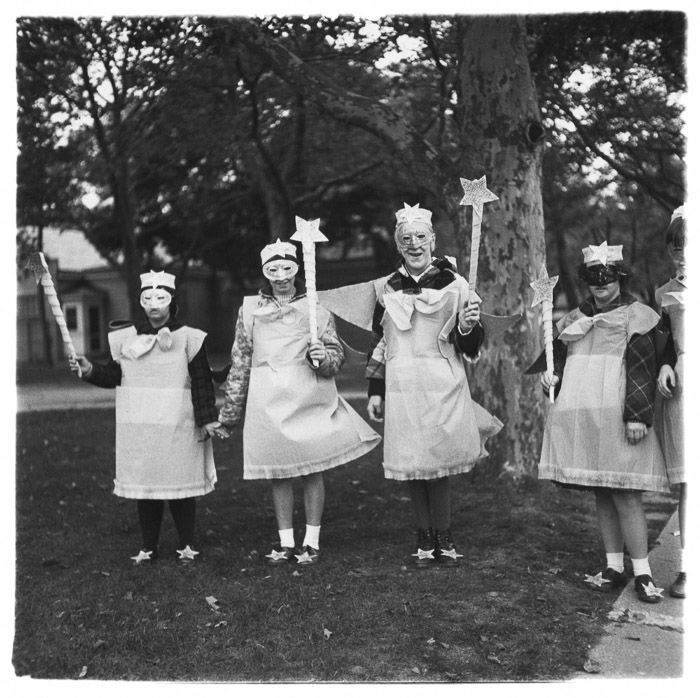
Diane Arbus
6. Deborah Copaken
Deborah Copaken (born March 11, 1966) is best known for her war photography and documentary photographic journalism.
She was born in Boston and graduated from Harvard. Then she moved to Paris in the late 80s to follow her photographic dream.
Knocking on the doors of French photographic agencies got her an assignment. She photographed the Mujaheddin, who were freedom fighters at the time.
From there, she found herself in Moscow, Zimbabwe, and Amsterdam. In Romania, she documented the conditions of state-run orphanages.
She left the business as she portrayed other photojournalists as vultures. She found distaste preying on the unfortunate. Copaken is also a famous writer and has published several novels.
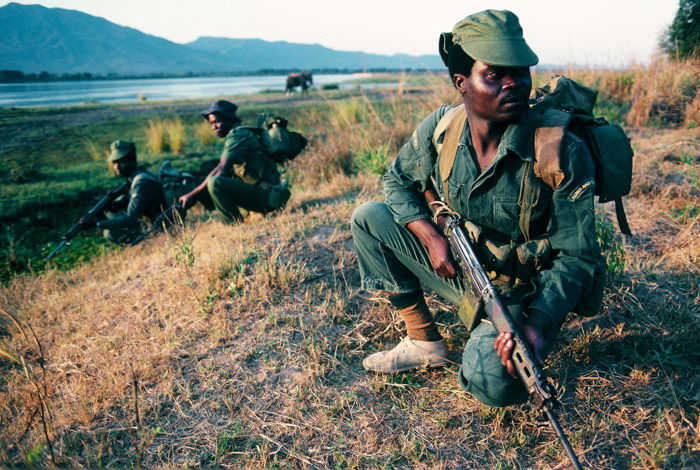
Deborah Copaken
7. Annie Leibovitz
There is no other female portrait photographer as famous as Annie Leibovitz. Throughout her expansive career, she photographed Demi Moore, The Queen, and John Lennon on the day he was killed.
Annie was born on October 2, 1949, in Waterbury, Connecticut.
She started as a staff photographer for Rolling Stone magazine. This helped her hone her specific style.
She once said, "A very subtle difference can make the picture or not." Her style is unique and recognizable, and many of her photographs became iconic evergreens.
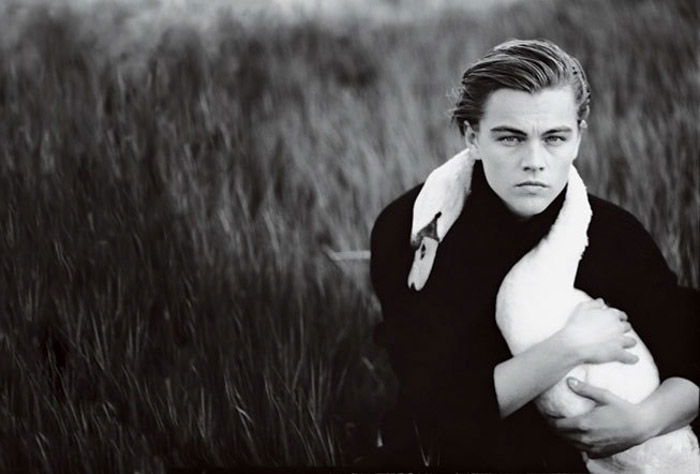
Annie Leibovitz
8. Vivian Maier
Vivian Dorothy Maier (February 1, 1926 – April 21, 2009) has become one of the most famous street photographers of the last few years. Her work was hidden in huge suitcases and only discovered after her death.
She was prolific in capturing street photography. Photography was her hobby, and she worked as a full-time nanny. She kept her passion for photography a secret for her entire life.
Thanks to the finder of her hundreds of thousands of negatives, her work has been shown across many countries.
A documentary film, Finding Vivian Maier, was created to try and find more information about this secretive photographer.
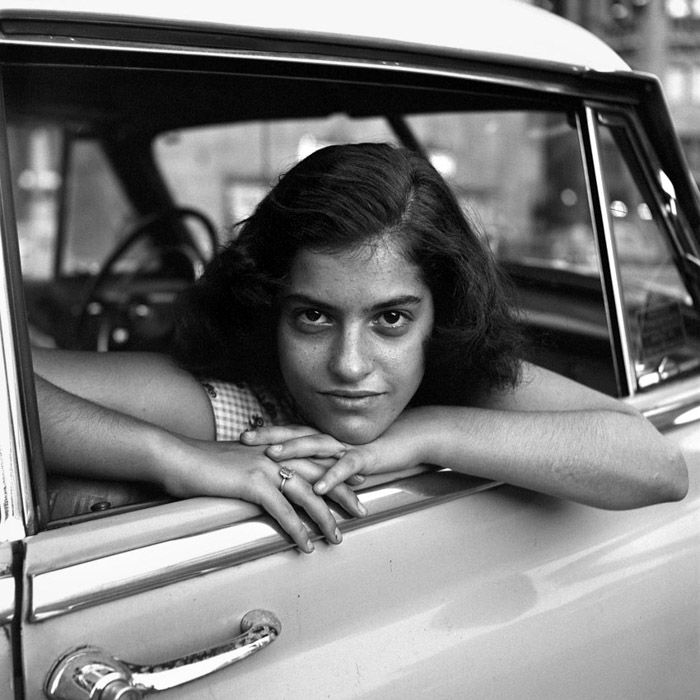
Vivian Maier
9. Dorothea Lange
No other female photographer covered the Dust Bowl period in America as much as Dorothea Lange (May 26, 1895 – October 11, 1965). Her portraits of impoverished people through one of the harshest periods of depression are harrowing.
Her work was on assignment for the Farm Security Administration. The images she created influenced the development of the documentary style.
Even after high school, she didn’t own a camera. But she was determined to become a photographer. For the 15 years before the great depression, she was a studio photographer.
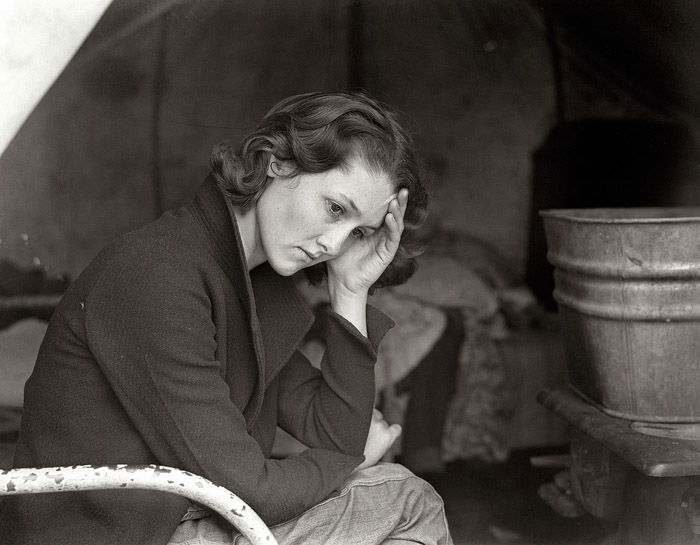
Dorothea Lange
10. Cindy Sherman
Cindy Sherman (born January 19, 1954) is a New Jersey-born photographer who specializes in conceptual portraits. Sherman shoots alone in her studio. She has several roles as director, author, make-up artist, hairstylist, wardrobe mistress, and model.
She shoots self-portraits that focus on social role-playing and sexual stereotypes.
In the mid to late 90s, Sherman began to work with fashion. She created concepts for runway shows as well as ads for numerous labels.
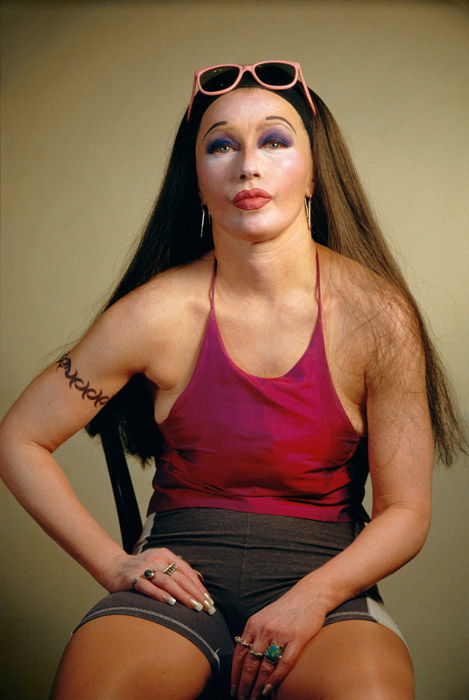
Cindy Sherman
11. Candida Höfer
Höfer (born February 4, 1944) is an interior architectural photographer from Cologne, Germany. Her work is characterized by technical perfection and a conceptual approach.
Höfer focuses on cultural and institutional spaces like libraries, zoos, and opera houses. She often excludes human elements from her scenes.
A famous photo series of hers is the Zoologische Gärten from 1991. In this work, she captures the strangeness of zoos and highlights how odd it is to see animals in manmade cages.
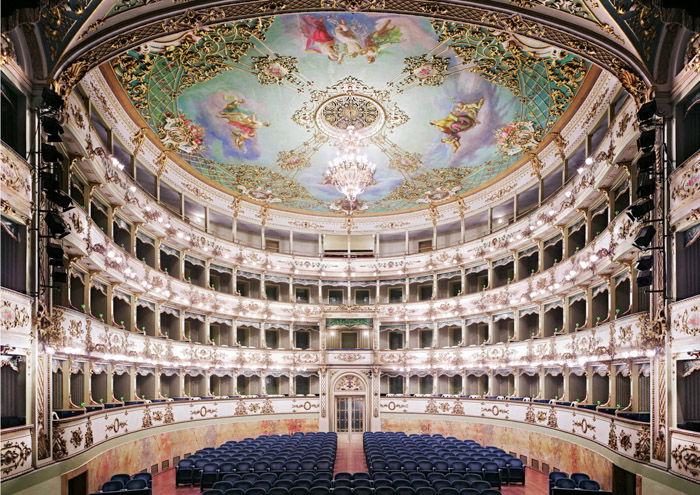
Candida Höfer
12. Hilla Becher
Hilla Becher (September 2, 1934 – October 10, 2015) and her husband, Bernd, worked collaboratively. They are best known for their photographs of industrial buildings and structures.
These images are often organized together in grids.
She studied photography in Potsdam. This is also where she gained her apprenticeship. Together they began working as freelance photographers for the Troost Advertising Agency in Düsseldorf. There, they concentrated on product photography.
This conceptual duo influenced Andras Gursky and Candida Höfer, among others.
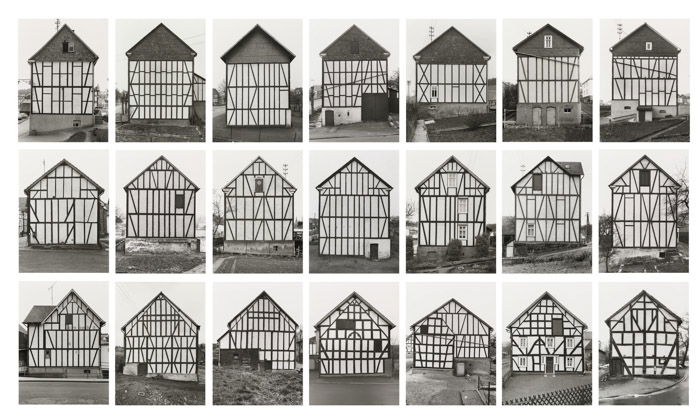
Hilla and Bernd Becher
13. Sam Taylor-Johnson
Sam Taylor-Johnson (born Taylor Wood on March 4, 1967) is an English photographer who concentrates on fine art photography. She attended Goldsmiths University and is part of the Young British Artists group.
She is best known for her series Crying Men, which features many of Hollywood’s celebrities crying. This series includes portraits of men such as Jude Law, Laurence Fishburne, Sean Penn, and Robin Williams.
Currently, she focuses on directing. Her first feature film is Nowhere Boy, a biopic about John Lennon’s childhood.
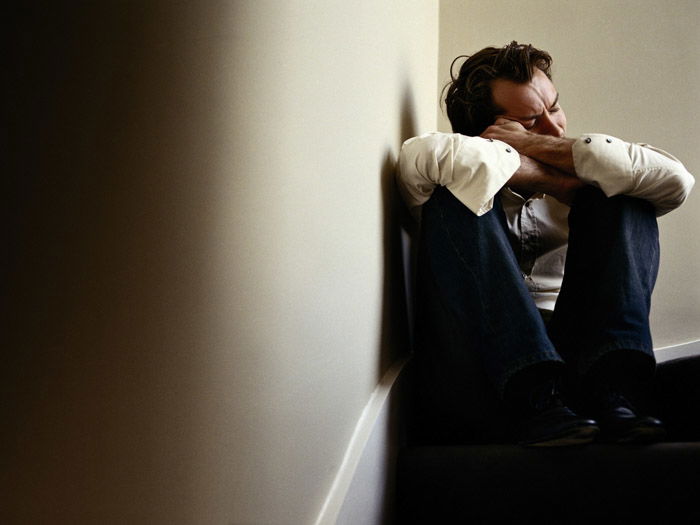
Sam Taylor-Jones
14. Imogen Cunningham
Cunningham (April 12, 1883 – June 23, 1976) was an American photographer best known for her nudes, botanical, and industrial architecture photographs.
She was a member of the Californian Group f/64. This group was known for its dedication to the sharp focus on simple subjects.
After graduating from university with a degree in chemistry, she began working for Edward S. Curtis. Here, she learned about portrait photography and helped in documenting American Indian tribes for the book The North American Indian.
Later, Imogen turned to street photography. In 1945, Ansel Adams offered her a position as a faculty member for the art photography department at the California School of Fine Arts.
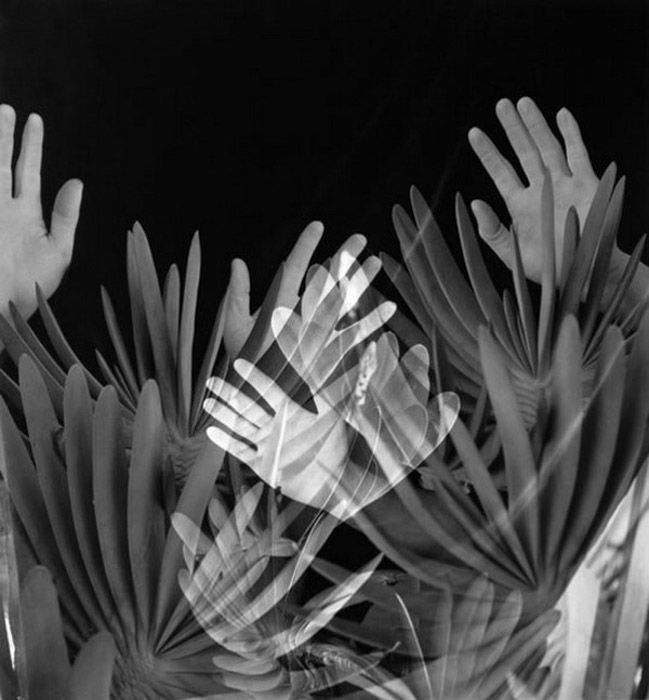
Imogen Cunningham
15. Gerda Taro
Gerda (August 1, 1910 – July 26, 1937) was a war photographer. And she was the companion and professional partner of photographer Robert Capa. Like Capa, she died photographing the front lines of war.
Gerda Taro is claimed to be the first female photojournalist who died covering the frontlines of war.
Taro was born in Stuttgart and emigrated to Paris in 1935 after escaping antisemitism in Germany. She met Endre Friedmann (Capa) there. During this time, she worked for the Alliance photo agency.
Her career was short but had a huge impact on war photography and photojournalism.
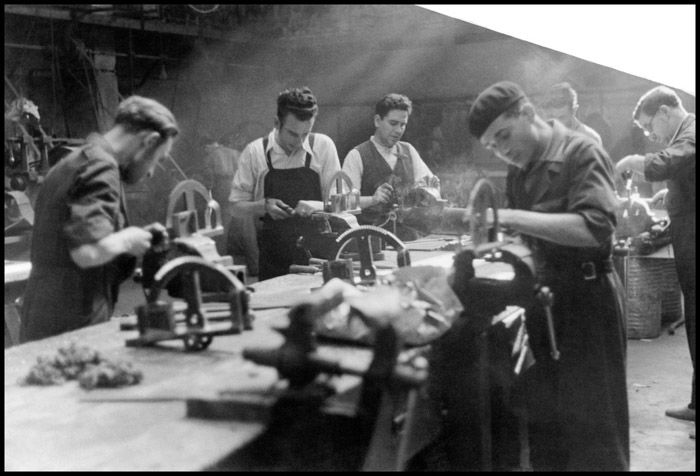
Gerda Taro
16. Sally Mann
The American Sally Mann (born May 1, 1951) is among the most famous female photographers. She is best known for her iconic large-format black-and-white photographs.
She started by photographing her young children. She turned to landscapes later on in her life.
Her landscapes were photographed using a 100-year-old large-format camera. She captured her images on wet plate 8 x 10-inch glass. This process allowed Mann to show and manipulate flaws in the images.
She has published her work in many books and still exhibits today.
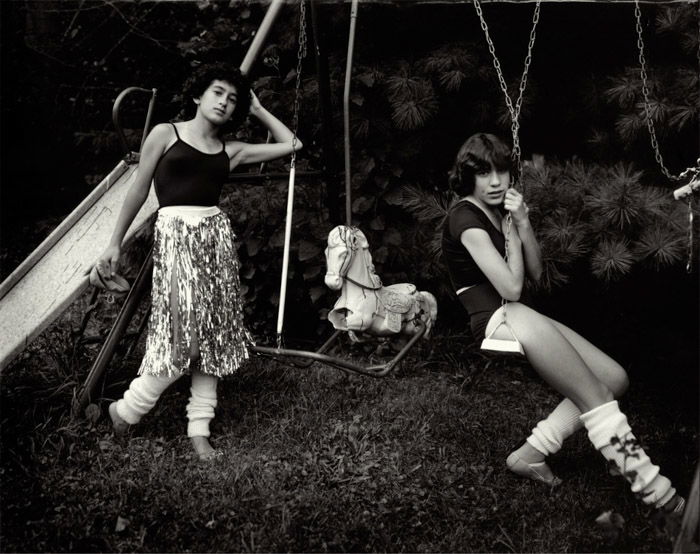
Sally Mann
17. Zoe Strauss
Zoe Strauss (born April 1, 1970) is an American street photographer who joined the photographic group Magnum. Her images around Philadelphia depict the struggles of daily life.
Zoe Strauss: Ten Years is her most notable exhibition. She describes it as "a narrative about the beauty and difficulty of everyday life.”
The series of 54 images shows her documentary and street photography of her travels.
Her work looks at themes of an odyssey, journey, and homecoming.
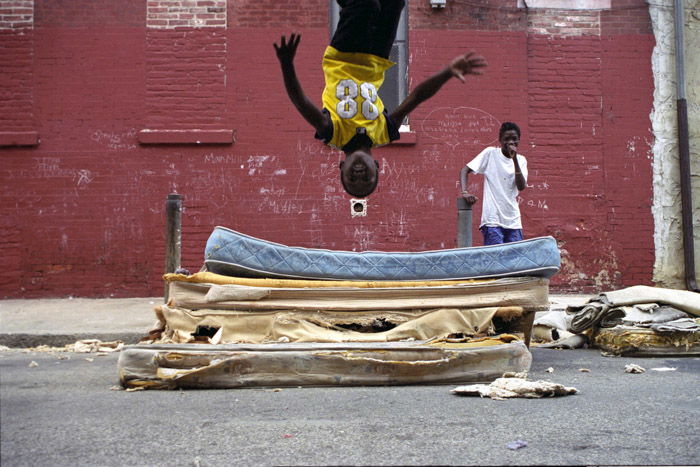
Zoe Strauss
18. Martine Franck
Martine Franck (April 2, 1938 – August 16, 2012) was a documentary and portrait photographer from Belgium.
She was a member of Magnum Photos for more than 32 years. She studied in Madrid and Paris and turned to photography because she had no talent for writing.
After coming back from her travels in the Far East, she assisted photographers at Time-Life. She also freelanced for Vogue and Life, among other magazines.
In 1980, she joined Magnum Photos (an agency founded by Capa) and became a full member in 1983.
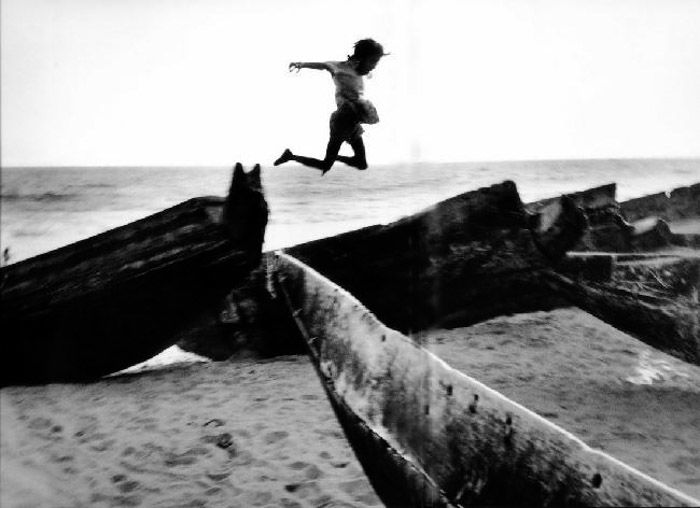
Martine Franck
19. Kunié Sugiura
Kunié is a Japanese photographer, multimedia artist, and painter who was born in Nagoya in 1942. She moved to America in her twenties.
Her medium was the photogram. She used these to capture flowers and creatures of the sea—both living and dead.
She is pursuing the connection between photography and other media. Her work often captures time and light and results in a mixture of abstract and concrete.
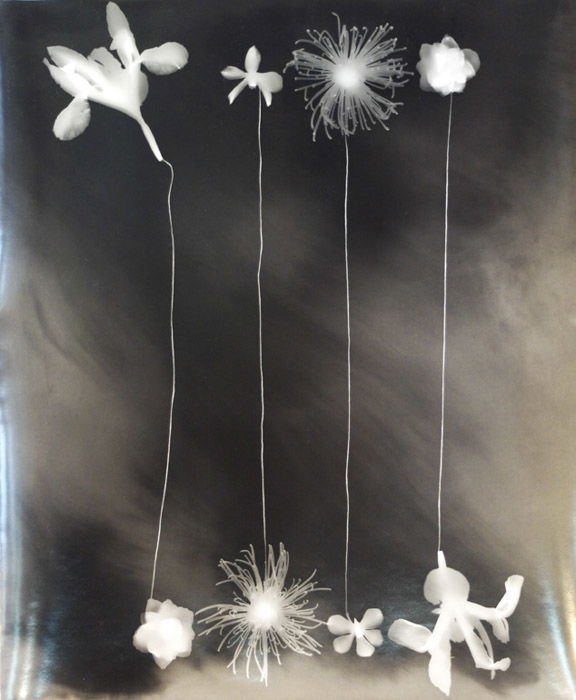
Kunié Sugiura
20. Shirin Neshat
Shirin Neshat (born 1957) is an Iranian visual artist who lives in New York City. She uses photography, film, and video as her media.
Her artwork focuses on the contrasts between the West and Islam. It also has themes of femininity and masculinity and bridging the spaces between these opposites.
Her strong light contrasts mirror these strong thematic contrasts. Text, in the form of Persian calligraphy, is also common in her portraits.
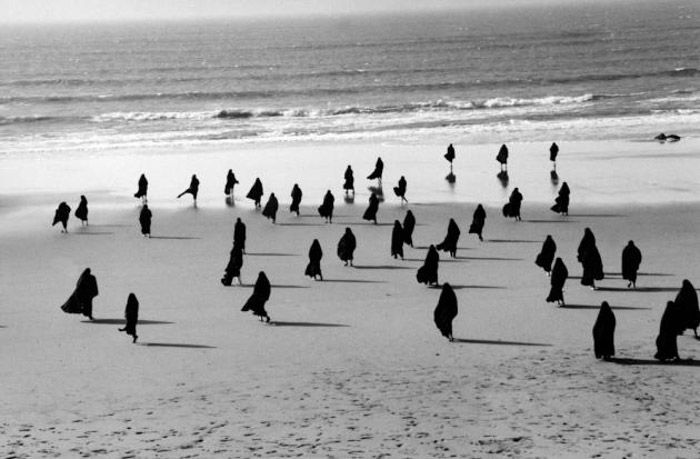
Shirin Neshat
21. Tina Modotti
Tina Modotti (August 16, 1896 – January 5, 1942) was born in Italy but emigrated to the US when she was 16. She tried to enter the world of the motion picture industry in Los Angeles while keeping her bohemian lifestyle.
Instead, she became a fine art photographer. By 1921, she moved to Mexico to open a studio with Edward Weston.
Here, she photographed folk art and landscapes before moving on to more abstract images. She continued to experiment with architectural interiors and flowers.
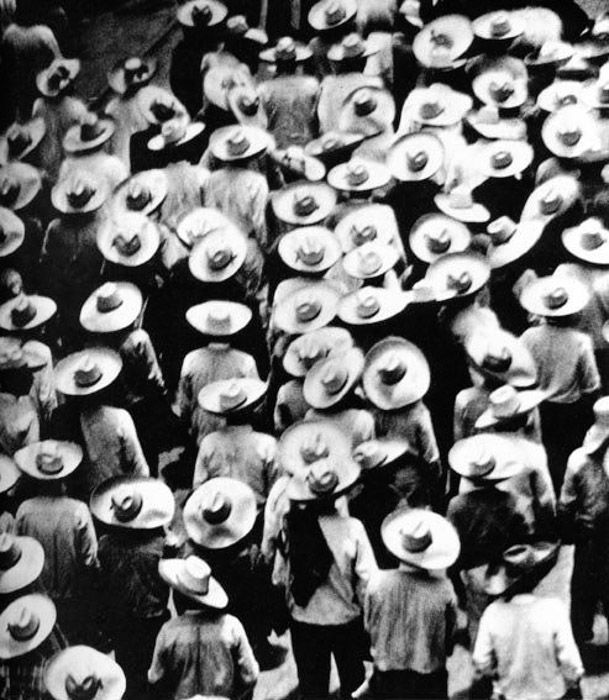
Tina Modotti
22. Gisele Freund
Gisele Freund (December 19, 1908 – March 31, 2001) is among the most famous women photographers in history. She was born in Germany but moved to Paris when the Nazi party gained power.
Gisele was a photojournalist known for her documentary photography and her portraits of artists and writers. She experimented with Leica Cameras and with Kodachrome film, and she developed a unique, candid-like portrait style.
She took the first color portraits of André Breton, Virginia Woolf, Paul Valéry, and many other artists.
She became the President of the French Association of Photographers and also took the official portrait of the French president, Francois Mitterrand.
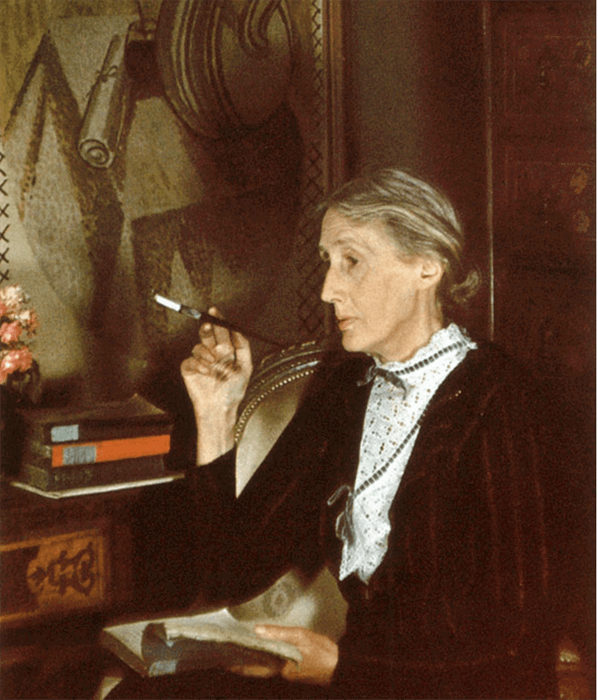
Virginia Woolf by Gisele Freund
23. Rineke Dijkstra
Rineke Dijkstra (born June 2, 1959) is a photographer from The Netherlands. She is living and working in Amsterdam. She has received many awards, including the Hasselblad Award and the Honorary Fellowship of the Royal Photographic Society.
Her career started with taking corporate portraits and pictures for annual reports. Today, she focuses on single portraits and often turns them into series.
Her subjects are often standing alone in the frame and facing the camera. She likes to capture the vulnerable side of her models.
One of her most famous works is the Beach Portraits (1992–1994) photo series. It consists of life-sized color photographs depicting young teenagers in bathing suits.
This photography series brought her international attention and fame.
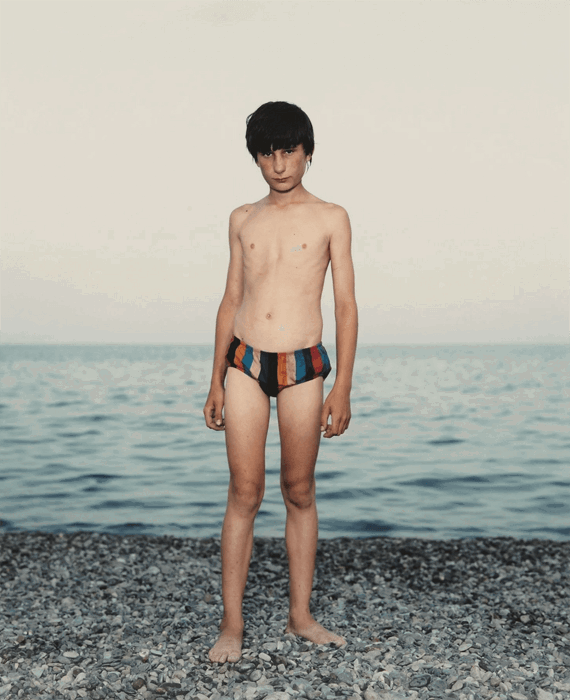
Rineke Dijkstra
24. Margaret Bourke-White
Margaret Bourke-White (June 14, 1904 – August 27, 1971) was a documentary photographer from the US. She is known as the first female American war photojournalist.
She was the first foreign photographer allowed to take photographs of Soviet industry under the Soviet’s five-year plan. She became a legend in the photography world.
Her passion for photography started as a hobby and was supported by her father, who loved cameras. She started to study herpetology at Columbia University, but this only increased her interest in photography.
She began with architectural and commercial photography and then moved on to photojournalism. She traveled a lot for work, and she was the first woman to be permitted to work in combat zones during WWII. She also worked as a photographer during the Korean War.
“The woman who had been torpedoed in the Mediterranean, strafed by the Luftwaffe, stranded on an Arctic island, bombarded in Moscow, and pulled out of the Chesapeake when her chopper crashed, was known to the Life staff as ‘Maggie the Indestructible.'”
Margaret died from Parkinson’s disease at the age of 67.
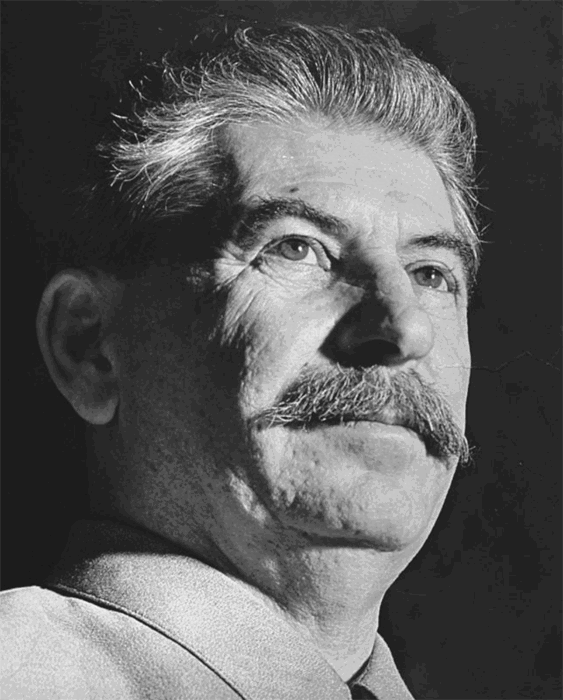
Joseph Stalin by Margaret Bourke-White
25. Hannah Reyes Morales
Hannah Reyes Morales is a photojournalist and National Geographic Explorer from the Philippines. She focuses on and documents the stories people tell themselves during hard times.
She photographed human trafficking at sea in the Philippines, documented the war drugs in her hometown, and reported on forced marriages in Cambodia. Hannah shares intimate stories of people who know what true suffering is.
She received several awards and was a National Geographic Grantee in 2019.

Hannah Reyes Morales
Conclusion
These ladies are only a few of the many outstanding female photographers in the photography world. Looking at their biographies and work, we can all agree that women deserve to be praised in the photography industry as well.



